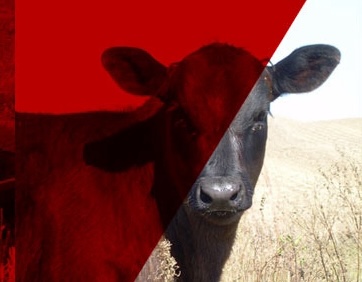
By interseeding annual grass into established alfalfa fields and applying water with a K-line irrigation system, Jerry Weekes has developed a system for maintaining cows on limited perennial acres. Jerry Weekes has spent a lifetime in the cattle industry. Most recently, Jerry sold the local sale barn he owned for 27 years, in the Nebraska Panhandle, but continues to develop innovative approaches to the cattle industry. Intensive grazing management is not a new concept and is certainly not new to Jerry Weekes who was first introduced to the Allan Savory school of grazing management many years ago in South Dakota.
Today Jerry Weekes buys bred cows in January and February, winters them on dormant grass with protein supplementation, then grazes the pairs on the triticale interseeded alfalfa mix using an intense rotation system. By purchasing short term cows, weaning the calves, and selling the cows in July and August, he avoids dealing with bulls, and takes advantage of the seasonal peak in the cull cow market. He can then use the regrowth from the intensive grazing system to grow the weaned calves.

By using the water from the irrigation ditch, which comes from the North Platte River, he increases the regrowth in the forages previously grazed. Dividing up the 110 acres into 10-acre tracts, he is able to maintain about 150 cow-calf pairs during the growing season. Because the forage is lush and vegetative much of the time, Jerry is adamant about feeding a mineral package with an ionophore in it to the cows. This helps control digestive issues that might be an issue with high-quality forage. Additionally, he makes sure the calves all get vaccinated against clostridial diseases before being moved to the high-quality pastures.
This intensive grazing rotational system on irrigated pasture allows him to capture more value per taxable acre of land than perennial pasture land would. Additionally, the cost of procuring enough perennial pasture to support the same number of pairs is not currently economically feasible for many producers. Being creative in the face of limited perennial acres has paid off for Jerry Weekes.
Article by Karla Wilke, Cow-calf, Stocker Management Specialist, Nebraska Extension.

